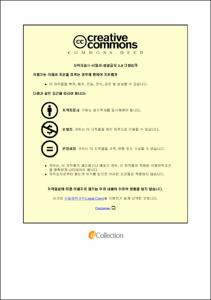Ulsan Univ. Repository
Thesis
General Graduate School
Ship Building & Marine Engineering
2. Theses (Ph.D)
Response of marine structures to repeated impact loadings
- Abstract
- Marine structures including floating offshore wind turbine can suffer from various types of repeated impact loadings. The repeated impact loadings occur from contact with floating objects, and from repeated impulsive pressure loadings induced by slamming, sloshing, green water, and explosions. For polar class vessels repeated mass impact loadings from ice floes need to be considered. Offshore structures including offshore wind turbines are subjected to repeated mass impacts from attendant vessel collisions and to repeated slamming impacts from wave actions. For offshore structures installed in cold region and polar class vessels, in addition to the repetition of impact loadings, the cold temperature effects on the structure responses should be taken into account. However, these effects have not explicitly been taken into account in relevant rules of classification societies. This thesis deals with the structural behaviour of ship and offshore structural components subjected to repeated impact loadings arising from collisions between icebergs (and/or floating objects) and marine structures, as well as slamming and explosions. The focus is given to repeated mass impact response of single steel beam, steel grillage and plate as well as repeated dynamic impulsive loadings on unstiffened and stiffened plates.
Relevant experimental data of small-scale, welded ships and offshore structural components are compiled. A series of the single and repeated impact tests are performed on single beam and steel grillage models. These test data will be useful for future benchmarking of numerical and simplified prediction methods for repeated impact response of similar structures. The experiments are described in detail including the test conditions, exact material properties and the method to explore repeated impact response of the tested models. Numerical models based on finite element method are developed, and comparative analysis of experiments is conducted. Repeated impact response and deformation behaviour are assessed based on the detailed results obtained through numerical analysis. The most important data utilised is an evolution of deflections and strain histories. The permanent deflections of the tested models and the impact forces were increased when the structure was repeatedly impacted. However, the increment of deflection and impact durations were gradually decreased with the number of impacts. Further analyses covering various cases and conditions are performed, and general findings are summarised. In addition, simple yet reliable formulae for prediction of permanent deflection evolution of marine structural components were empirically derived based on the results of the rigorous parametric study.
Based on the energy conservation method, the simplified analytical method was developed to evaluate the effect of repeated mass impacts on the response of steel structures at room and low temperature. This method was substantiated with the test results and was also compared to the numerical predictions. Nevertheless, considering the large uncertainty associated with structural impact problems, the proposed method may be interpreted to be reasonable agreement indicating its simplicity.
- Issued Date
- 2018
- Awarded Date
- 2018-02
- Type
- Dissertation
- Alternative Author(s)
- Truong Dac Dung
- Affiliation
- 울산대학교
- Department
- 일반대학원 조선및해양공학과
- Degree
- Doctor
- Publisher
- 울산대학교 일반대학원 조선및해양공학과
- Language
- eng
- Rights
- 울산대학교 논문은 저작권에 의해 보호받습니다.
- Appears in Collections:
- Ship Building & Marine Engineering > 2. Theses (Ph.D)
- 파일 목록
-
-
Download
 200000003945.pdf
기타 데이터 / 15.34 MB / Adobe PDF
200000003945.pdf
기타 데이터 / 15.34 MB / Adobe PDF
-
Items in Repository are protected by copyright, with all rights reserved, unless otherwise indicated.